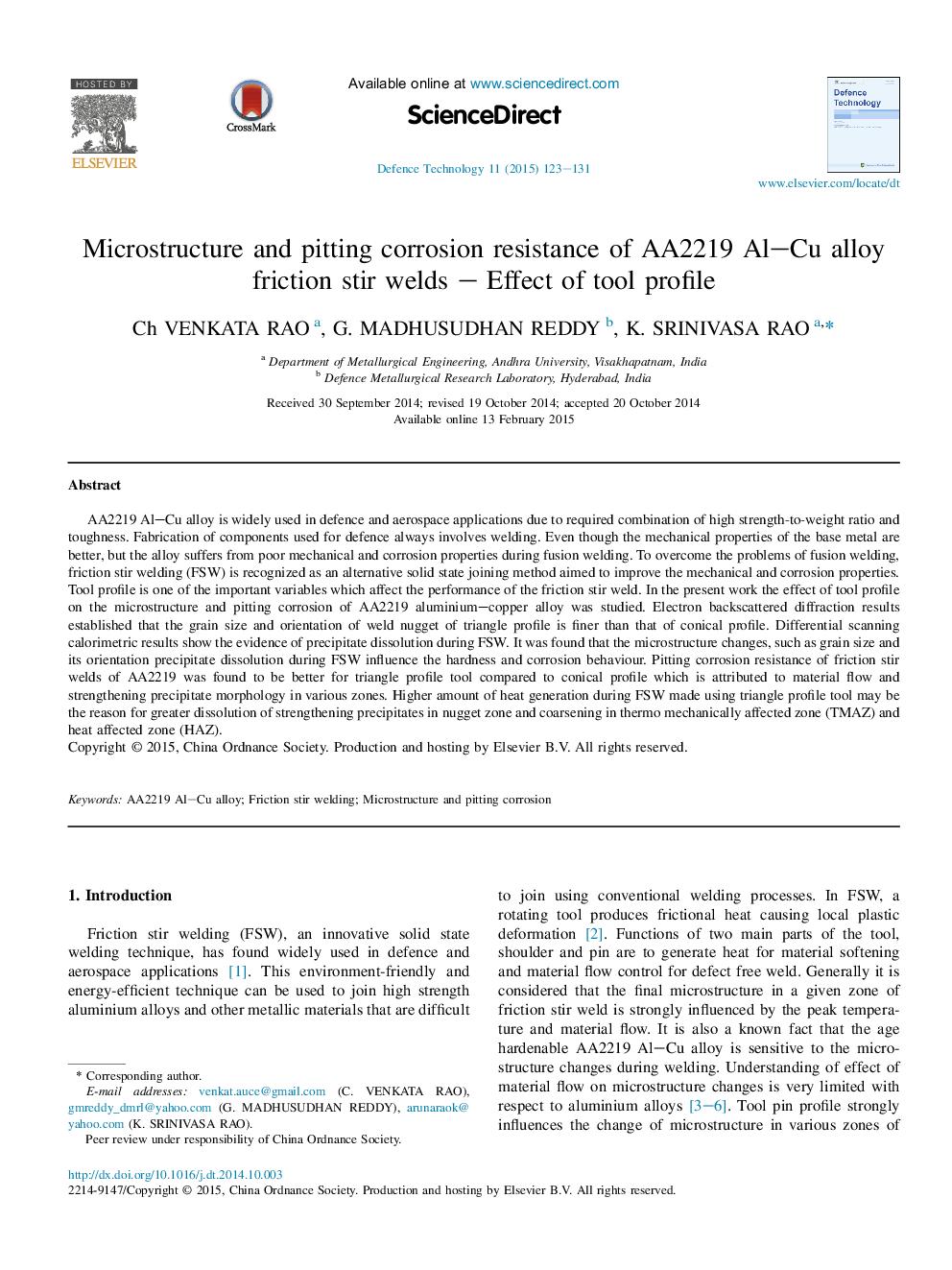| Article ID | Journal | Published Year | Pages | File Type |
|---|---|---|---|---|
| 771269 | Defence Technology | 2015 | 9 Pages |
AA2219 Al–Cu alloy is widely used in defence and aerospace applications due to required combination of high strength-to-weight ratio and toughness. Fabrication of components used for defence always involves welding. Even though the mechanical properties of the base metal are better, but the alloy suffers from poor mechanical and corrosion properties during fusion welding. To overcome the problems of fusion welding, friction stir welding (FSW) is recognized as an alternative solid state joining method aimed to improve the mechanical and corrosion properties. Tool profile is one of the important variables which affect the performance of the friction stir weld. In the present work the effect of tool profile on the microstructure and pitting corrosion of AA2219 aluminium–copper alloy was studied. Electron backscattered diffraction results established that the grain size and orientation of weld nugget of triangle profile is finer than that of conical profile. Differential scanning calorimetric results show the evidence of precipitate dissolution during FSW. It was found that the microstructure changes, such as grain size and its orientation precipitate dissolution during FSW influence the hardness and corrosion behaviour. Pitting corrosion resistance of friction stir welds of AA2219 was found to be better for triangle profile tool compared to conical profile which is attributed to material flow and strengthening precipitate morphology in various zones. Higher amount of heat generation during FSW made using triangle profile tool may be the reason for greater dissolution of strengthening precipitates in nugget zone and coarsening in thermo mechanically affected zone (TMAZ) and heat affected zone (HAZ).
